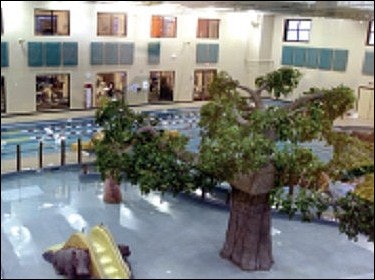Milwaukee's Neighborhood Schools Initiative creates new recreation opportunities

In an election year, as we are bombarded with messages that more often than not serve to remind us of the empty (or broken) promises of politicians, it's encouraging to witness a government program that appears to be working exactly as it was designed.
Milwaukee's Neighborhood Schools Initiative was adopted by the Milwaukee Public Schools Board of School Directors on August 24, 2000, with a mission to reduce overcrowding and create more (and better) neighborhood school choices for parents and children. It was also hoped that, by adding more than 11,000 new classroom seats in the city's most overcrowded attendance areas, the initiative could significantly reduce the school system's reliance on busing (MPS spent $58.1 million to transport more than 70,000 children each day during the 1999-2000 school year).
Milwaukee Public Schools was thus authorized to borrow up to $98 million in state funds over six years, and was encouraged to create and expand partnerships between MPS and community agencies and organizations. Among the organizations to subsequently partner with schools were three churches, the Archdiocese of Milwaukee, a Boys & Girls Club, the Milwaukee YMCA, the Milwaukee Police Athletic League, the V.E. Carter Development Center and La Causa Inc. (a multicultural social services agency).
Some of the partnerships simply provide additional classroom space, but several have involved the construction of state-of-the-art elementary schools complete with facilities for holding phy ed classes during the day, and community recreational services after school. The first such project, the Todd Wehr Metcalfe Park Community Center, combined a Boys & Girls Club with a K-8 public school. In 2001, the Northside YMCA formed a charter school called Young Leaders Academy, and built a new 115,000-square-foot facility to house the full-service Y and a K-8 school. In June 2002, the Auer Avenue School and the Police Athletic League teamed to open a 110,000-square-foot building. And most recently, the Silver Spring Neighborhood Center joined with the Browning School to create a new combined Neighborhood Center and K-5 public school - the first Milwaukee public school to be built inside a public housing development.
"For each project, the collaboration was somewhat unique," says Marsha Sehler, director of business development for Uihlein Wilson Architects, which served as designer for the Metcalfe, Northside and Browning projects. "However, all of the centers - in addition to improving services for children and connecting families and children to multiple programs and services provided by the schools and partnering agencies - have become engines for economic development in blighted neighborhoods. As an example, soon after the Metcalfe Center went into the ground, a new large-scale grocery store was being planned for the neighborhood, the first such venture in several decades. Then, that project's success became the catalyst for the Northside Y to be built, also in an economically disadvantaged area of the city."
All built in fairly dense urban settings, the projects have many design features in common but, also, significant differences. Two of the projects required the reuse of an existing building; the Metcalfe Center's school cafeteria/performance space, for example, was once a small manufacturing plant. Two were the recipients of major donations that had to be integrated into tight site plans. Major League Baseball donated a ballfield to the Metcalfe Center, which serves both students and members of the Boys & Girls Club. The Kadish Foundation funded construction of a greenhouse at Browning, which the school is using to advance its science curriculum while the Neighborhood Center uses it for classes in nutrition and healthy living.
Considering the involvement required of several diverse organizations and individuals - beyond the obvious school and community group administrators, city, county and state planning agencies were also involved - it was no wonder that planning sometimes became complicated. "In our experience, it took one committed and powerful individual to act as the developer to bring all interested parties together, create a process for everyone to be heard and make the important decisions," Sehler says.
And the results have been profound.
"The Boys & Girls Club has found that approximately 75 percent of its daily attendance comes directly from the Metcalfe School," she says. "At the end of the school day, without leaving the building, kids enter the club, where they can get help with homework before they go to the gym. Music students from school participate in the club choir. Art projects started in school get completed after school in the art room. As the principal at Young Leaders Academy told us, 'Our kids and teachers feel like the school day never ends. They want to be in the building.' "




































